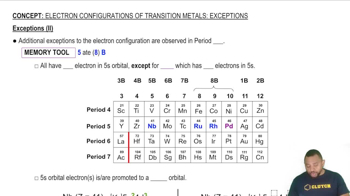Here are the essential concepts you must grasp in order to answer the question correctly.
Oxidation Numbers
Oxidation numbers are a way to keep track of electrons in chemical compounds. They indicate the degree of oxidation of an atom in a molecule, helping to determine how electrons are transferred during chemical reactions. The oxidation number of an element can be positive, negative, or zero, depending on its electron gain or loss relative to its elemental state.
Recommended video:
Rules for Assigning Oxidation Numbers
There are specific rules for assigning oxidation numbers, such as: the oxidation number of an atom in its elemental form is zero; for monoatomic ions, it equals the charge of the ion; in compounds, hydrogen typically has an oxidation number of +1, while oxygen usually has -2. These rules help systematically determine the oxidation states of elements in various compounds.
Recommended video:
Copper(II) Sulfate (CuSO4)
Copper(II) sulfate, or CuSO4, is a compound where copper has an oxidation state of +2. The sulfate ion (SO4) has a charge of -2, which is balanced by the +2 charge from copper. Understanding the structure and oxidation states in CuSO4 is essential for correctly assigning oxidation numbers to each element in the compound.
Recommended video:



